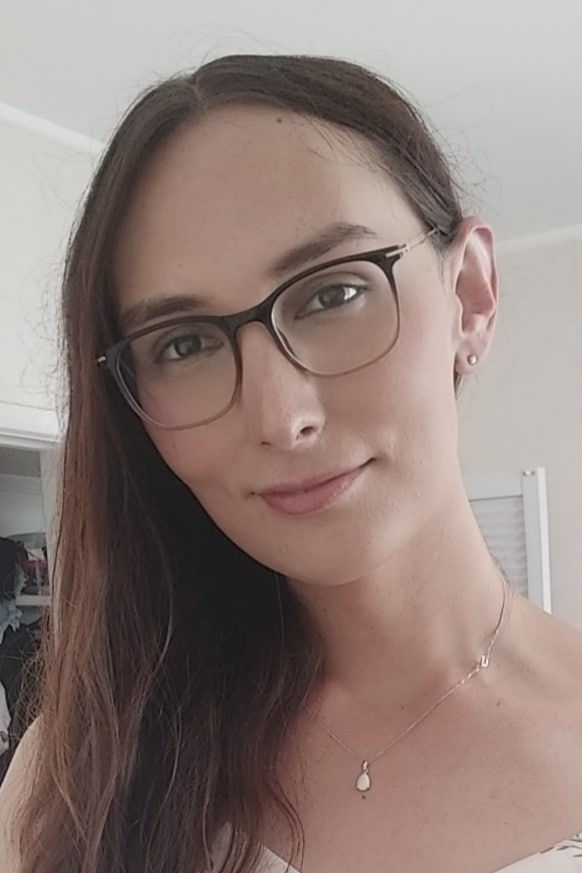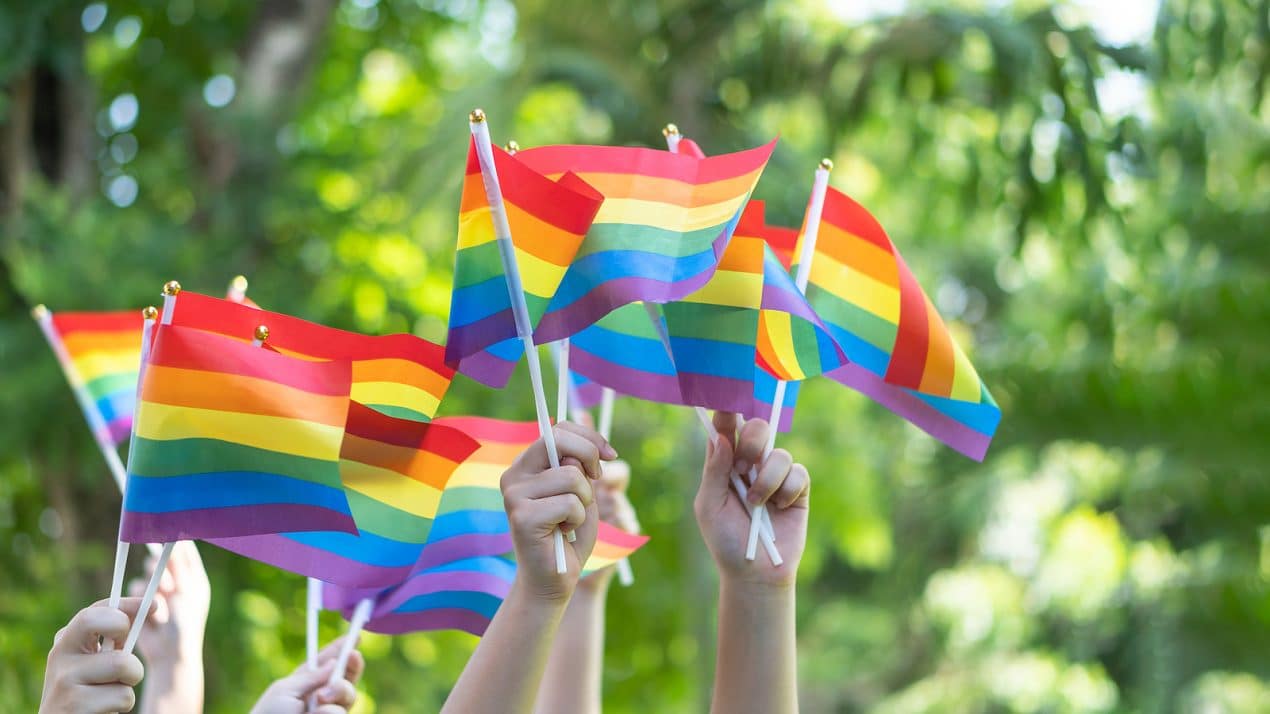
15 February 2021 – A NUMBER of high-profile celebrities have come out which for many people was their first exposure to what it means to be transgender. There has also been an increase in transgender research. One interesting finding of this research is that autistic people are much more likely to experience gender dysphoria and to identify as transgender than their neurotypical peers.
“Your experience of the world is really different so it’s always in conflict. I was seen as being in the wrong, but it was like ‘I can’t be in the wrong’, it was really debilitating! Add to that seeing gender differently and WHOA! Autistic people can end up with mental illnesses because they’re being told their truth doesn’t exist and that’s really scary” – Zain
Strang, Powers Knauss, & Sibarium (2018) estimated that between 6.3% – 13.3% of youth referred to clinics for gender identity purposes were autistic, which is approximately 10 times higher than rates of gender dysphoria in neurotypical youth. Furthermore, the Counting Ourselves study (Veale et al., 2019); the first comprehensive national survey into the health and wellbeing of trans and non-binary people conducted in Aotearoa New Zealand, reported that one-in-five of the 1178 participants (22%) described themselves as neurodiverse. The question was not specifically about autism but goes a long way in highlighting the neurodiversity within the Kiwi trans community.
Being both trans and autistic is a very unique experience. It is no secret that transgender people face a lot of prejudice and discrimination as they move through the world, from misgendering and denial of their identity, transphobic hate speech, physical and sexual violence, and even discrimination in employment and healthcare. Autistic people can also face similar forms of social, workplace, and healthcare discrimination and prejudice. People who are both trans AND autistic can therefore face a kind of “double discrimination” that results from existing in the intersection of two marginalised identities.
Here’s a quick little primer of some of the terms used in this article.
- Sex generally refers to a person’s biology, e.g., what body parts they were born with, what their chromosome combination is, and what their general pattern of hormones are. Of course, this is not an exact science either, as there are people born with XXY chromosomes, there are people born with a mix of sex characteristics, and some people naturally have hormone levels way outside of the average range for their sex.
- Gender on the other hand is a social construct that is often discussed in terms of masculinity and femininity. When you think of gender, think of the ways we perceive ourselves and others, how we dress, how we express ourselves, and the behaviours and roles we consider ‘girly’ or ‘manly’. That is gender in action.
- In other words, sex is physical, gender is a feeling, identity, or manner of expression. When someone’s sex and gender match up, e.g., they are assigned male at birth, and they identify as a man, they are cisgender. When someone’s sex and gender do not align, e.g., they are assigned male at birth, but they identify as a woman, they are transgender. For some people, their gender identity lies somewhere between feeling mostly masculine or mostly feminine. A person who feels this way may describe their identity as non-binary, e.g., not entirely male or female, but a mixture of both or neither. Trans people may experience gender dysphoria which refers to feelings of discomfort and distress at their body or their presentation not matching their gender identity. Dysphoria is common; however, it is not a requirement for being trans.
Conflict
Coleman-Smith, Smith, Milne, & Thompson (2020) interviewed 10 autistic trans people to find out more about this nuanced experience. The participants ranged from age 18 to age 65 and included a mix of trans men, trans women, and non-binary people. The following quotes are from this study.
Most people who participated in the study shared a common story. Initially they described feeling at conflict with their bodies and their inner sense of self. Puberty was a rough time for everyone as their bodies began to change in ways they did not want or expect and the pressure to conform to normative gender presentations increased, even for the trans men who were initially allowed to dress like ‘tomboys’.
“I never felt I was a girl and I never…wanted to wear girly clothes or things like that, I always saw myself as being a man… [I thought] everyone else was strange ‘cause they saw me as being a girl.” – Sam
Most people described hating their bodies and feeling like they belonged to someone else. This led to feelings of isolation and many began to struggle with their mental health. This was in large part due to feeling invalidated, mistreated, or discriminated against by others, but also intense feelings of self-hate and anger at themselves for not being able to be or act neurotypical or like their gender at birth.
“More than once I attacked it…one time when I was particularly feeling down, I scratched and scratched. I skinned by arm, mum caught me and sent me to the doctors”. – Rihanna
Realisation
This progressed to a gradual development and understanding of their gender identity which manifested as ‘feeling different’ for a lot of people, followed by learning what being transgender was at a pivotal point of their lives. For some it was relieving, in much a similar way to initially getting an autism diagnosis. It finally gave them a term to describe how they were feeling, as well as hope that there were potential pathways forward with their gender identity.
“Autism became a coat hanger I hung everything on…it wasn’t until a long time later, when I saw about transitioning I realised these things were clearly about my gender like my breasts…I couldn’t abide them, knowing about them, touching them, that wasn’t sensory sensitivity…it was very specifically gender.” – Walter
For others it was a bit more distressing when hit with the realisation of how marginalised trans people are within society and that living as their authentic selves could prove challenging. This occasionally resulted in concealing or suppressing their gendered feelings due to lack of knowledge around gender transition services and out of fear of discrimination and rejection from their families, peers, and broader society.
“There’s big conflicts between how you feel and what other people are saying and how you deal with that…you hide who you really are…you mentally push it away…because it’s not good for your mental health to keep banging your head against a brick wall.” – Felix
For those who suppressed these feelings, they eventually reached a precipice where they could no longer go on living as their inauthentic selves which spurred their decision to begin transitioning.
“I reached that point…everything went completely to hell, my mental and physical health fell to pieces…I’d nothing to lose anymore and…it gave me the courage to say ‘to hell with trying to fit, I’m gonna decide who I am.’” – Felix
Social Transition
All participants began with a social transition which consisted of choosing new pronouns and a new name, wearing different clothes, etc. Participants talked broadly about all the ways their life improved after they started transitioning, like improved self-confidence and wellbeing, as well as better management of their gender dysphoria.
“Since I’ve been like this, I’ve been happier…The more happy I am, the more engaged I am and the more I want to engage…the more I do and aren’t misread, the happier I am!” – Alana
For some people, being autistic has acted as a protective factor against fears of the negative perceptions of other people during their gender journey. In other words, being autistic allowed some people to live authentically according to their gender identity, and not feel pressured to conform to societal expectations of how men and women “should” look or act.
“…there’s us that are oblivious to what other people think of us and there’s those who worry about what everybody’s thinking…I fit into the category of ‘I’m not bothered’ which is a blessing, so I’ve not had any negative experiences. I’m quite happy with my shield of “this is who I am”, if I don’t actually do the ‘right’ social male thing, tough, I’m used to not fitting in anyway.” – Zain
Others found social transition more difficult and talked about their negative experiences since coming out, like physical abuse, verbal abuse, and predominantly transphobic comments which could be devastating.
“At first your confidence is through the roof…then it wouldn’t take much for it to just crumble…at first I found it a lot easier to make friends, so I had more friends. Then after a while it went away…a few random comments can really get to me; I get really paranoid about it…I don’t go out as much”. – Alex
A lot of participants felt like socially transitioning while autistic was harder compared to neurotypical trans people because they had less of an intuitive understanding of gender presentation.
“I don’t feel like I’m fully socially transitioned because I am experiencing more autism barriers than I was as a woman…I had thirty odd years to learn how to pretend to be female and I’m still trying to come up with new strategies to be consistently read as male because expectations are different. Autism makes this slow. I’m also being read more as autistic because I’ve not learned the disguises for someone now read as male…My confidence is affected…so more autistic behaviour like stimming creeps out.” – Felix
Gender-affirming Healthcare
Everybody that was interviewed also eventually followed their social transition with a physical transition, I.e., accessing hormone replacement therapy or having gender-affirming surgeries. N.B. although pursuing a physical transition is common for a lot of trans people, not everybody wants to and that’s okay!
Unfortunately, some trans people have also reported that their autism can sometimes act as a barrier to accessing gender-affirming healthcare. It is not uncommon for families, doctors, and other health professionals to focus on an autism diagnosis while ignoring gender dysphoria and exploration, or even writing it off as a ‘symptom’ of autism and not a true facet of someone’s identity, aka, “are you really trans or just autistic and this is a special interest of yours?”.
“I’ve always enjoyed collecting toys; [my father] said ‘if you’re still playing with toys…you’re not mature enough to make these decisions…he thinks because of my interest I couldn’t know about my gender…when your gender is wrong, it’s pretty clear!” – Sam
Some participants also reported anxiety when trying to access gender affirming care for the first time, citing fears that the health providers would not be experienced enough with autism to adapt the assessment process to their needs. Fears of not being able to give the responses they thought the providers ‘wanted’ were also high due to communication difficulties and not experiencing or expressing their gender in a neurotypical way.
Community Connection
It is common after coming out as trans to seek out other members of the LGBT community to connect with, however some participants had trouble with doing this despite having the desire to. Due to the face-to-face nature of a lot of LGBT community spaces and get-togethers, e.g., noisy bars, loud Pride parades, etc, these spaces could be overwhelming and a sensory overload.
“Everyone is talking over drinks and it’s a positive atmosphere and welcoming…but I felt that I couldn’t engage with it…I get really uncomfortable in that sort of situation…with lots of people having a conversation it’s like ‘Arg!’”. – Kate
However, online chatrooms and social media can provide an alternate avenue to connect with others in the community. Despite the initial difficulties, being able to meet and interact with other trans people facilitated the change of information and advice and it provided a sense of belonging.
“I made some friends who were very into being openly feminine, and open about dress and stuff, so that helped me to experiment with dress and presentation…so accepting friend groups help a lot…through them I was able to be the person I wanted to be.” – Kate
Final Thoughts for Parents/Families?
Autistic trans people face a lot of challenges that neurotypical trans people and autistic people who aren’t trans do not have to. Some of these are structural and not easy to change quickly, but others, like family support, start in the home. Family and social support are associated with higher self-esteem, life satisfaction, and improved psychological wellbeing. It is very important to be supportive of your trans autistic children, to give them space to explore their identity, and to not be dismissive.
A lot of trans people, autistic or otherwise, can have strained relationships with their family members. How they are treated when living under their parent’s roof can directly affect the quality and willingness to maintain that relationship once they move out (if they have the means or capability to. It is not uncommon for trans people to cut off most if not all contact from their families once they are able to leave due to the mistreatment they experienced when they were living together. Dismissing your child’s identity, preventing any attempts at social or medical transition, and refusing to call them by their correct pronouns and chosen name are some of the fastest ways to destroy your child’s trust in you.
If this is a confusing or difficult thing for you to come to terms with, it has probably been even more difficult and confusing for your child to explore and come to terms with, and they need your love and support during this time more than ever.
Final Thoughts for Autistic People Questioning their Gender
Figuring out your gender is a journey, not a sprint, and it is okay to have periods of uncertainty. Trying out different identity labels, names, pronouns, and clothes can be helpful to see how you feel about them. You may want to do this with a few close friends, with your family if you feel like you can trust them with this information, or in online spaces, chat groups, or video games.
There is also no one-size-fits-all approach to gender and there is no way to do gender ‘wrong’. You might feel like a girl and identify as a girl, but not like wearing dresses. You might feel like a boy and identify as a boy, but still enjoy wearing skirts because they are comfortable or because you like them. You might not fit neatly into either stereotyped box or instead have an identity that is more fluid.
Some people may try and police your identity and claim there is a ‘right’ and ‘wrong’ way to be trans, but there isn’t. Often, when people are first figuring out their identity, they discount themselves from the community for not being ‘trans enough’ because their dysphoria isn’t overwhelming, or because they didn’t know they were trans from a young age. Much like with autism, gender is a spectrum, and no two people are exactly alike.
You are valid, you are not alone, and you are loved.
- Ashe Yee – (B.A. – Psychology) – joined the Altogether Autism team as a researcher in late 2019. She graduated from the University of Newcastle in 2016 with a Bachelor in Psychology (First Class Honours).
- This article first appeared in the Altogether Autism Journal, 2021.
References
Coleman-Smith, R. S., Smith, R., Milne, E., Thompson, A. R. (2020). ‘Conflict versus congruence’: A qualitative study exploring the experience of gender dysphoria for adults with autism spectrum disorder. Journal of Autism and Developmental Disorder, 50, 2643-2657.
Strang, J. F., Powers, M., Knauss, M., & Sibarium, E. (2018). “They thought it was an obsession”: Trajectories and perspectives of autistic transgender and gender-diverse adolescents. Journal of Autism and Developmental Disorders, 48(10), DOI: 10.1007/s10803-018-3723-6
Veale, J., Byrne, J., Tan, K., Guy, S., Yee, A., Nopera, T., & Bentham, R. (2019). Counting ourselves: The health and wellbeing of trans and non-binary people in Aotearoa New Zealand. Transgender Health Research Lab, University of Waikato: Hamilton NZ.




